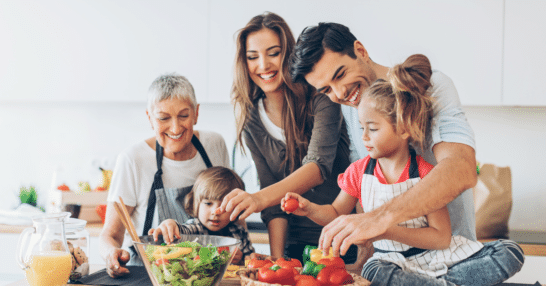Are EAPs outdated?
Employee Assistance Programs, or EAPs, have their origin in occupational alcoholism programs that began in the 1940s. In more recent decades, they have evolved into programs that offer employees limited support for a set of narrowly-defined life challenges—such as work-related stress, relationship issues, and crisis support— that may impact their productivity.
Typically, EAPs function as referral hubs, where employees engage with different representatives on each occasion and are provided with a roster of service providers, some of whom may no longer be available. The roster is compiled based solely on the specific request, without guidance on potentially beneficial alternative or complementary providers. Additionally, EAPs may offer a predetermined number of sessions. It’s important to note that their primary purpose is to serve as an intermediary rather than a resolution platform for problems.
Unfortunately, EAP utilization is historically very low, around 5%, according to some studies. Limited service offerings, lack of employee awareness, doubts about effectiveness, and concerns about privacy are just some of the challenges holding EAPs back.
“The EAP [at a major tech company] could be a lot better…They just send you a bunch of phone numbers over email and we have to call and schedule appointments. Sometimes [this] can take weeks if not months…] —Employee review on the community forum Blind
Employees needs have evolved
Eighty years later, major societal changes, including shifting demographics, evolving cultural norms, and an ongoing decline in social services, have resulted in employees taking on more responsibilities outside of work. They face growing burdens of caregiving for family members due to rising complex and chronic healthcare issues, as well as an increase in aging populations and fallout from COVID.
How is Grayce different from an EAP?
First, let’s begin with what Grayce is not: It’s not a service that connects employees to outside providers for short-term assistance on a wide range of unrelated issues. What Grayce is: Grayce was designed to bridge the gap between the limited help that EAPs can provide and the monumental challenges facing employees who are providing care to loved ones. The company offers a team of highly-trained care professionals who develop care plans and set goals against family care issues, and off-load significant responsibilities for taking care of family members.
“For anyone who needs support—aging parent, expectant parent, special needs child—you MUST sign up [for Grayce]. [A Care Partner] will help do the leg work for any type of services…As someone who hates to ask for help, the relief washed over me like a waterfall on a summer day.” — Nextdoor employee
#1 Relationship-based care
Grayce provides all members with a Care Partner who will work with them individually, one-on-one, to resolve their family care needs. This concierge-level support is the foundation of the Grayce experience. Members benefit from a continuous partnership with a caring, knowledgeable expert who knows their evolving story from the beginning.
#2 Deep experience managing a broader range of needs
Grayce’s Care Partners are master’s-level professionals, typically with 7-10 years of extensive care management expertise. This experience enables them to develop individualized care plans based on evidence-based strategies and practices that will best meet employees’ immediate and long-term family care needs.
30% of Grayce’s members have family living outside the US. Our Care Partners navigate family care complexities worldwide, bridging language barriers and offering services tailored to local contexts.
Additionally, each member’s Care Partner will provide individualized educational resources from Grayce’s extensive content library to help prepare members for their unique challenges, from Individualized Education Plans (IEPs) to doctor visits to managing disability insurance.
#3 End-to-end resolution of issues
Grayce’s Care Partners are laser-focused on helping members overcome the specific challenges of family care. This means setting goals, creating care plans, and following through with each issue to remove as much of the care burden as possible. This could mean setting up appointments, researching and coordinating access to cost-reducing benefits, or providing professional emotional support for a difficult decision about caring for a loved one.
#4 Access to a family care community
Members also have access to Grayce’s caregiving community, which offers peer-to-peer support forums and live events. This opportunity to share resources, learning, and personal stories is another way Grayce helps employees find the support they need to navigate family care issues—such as end-of-life conversations, navigating financial care decisions, addressing a difficult medical diagnosis, and even building resilience in difficult times.
#5 Measurable business outcomes
Grayce tracks performance metrics across its entire client base to monitor the effect of its programs. This quantitative understanding of the care model’s impact allows Grayce to keep up to date on where it can make the biggest impact for employees now, while evolving to meet their needs in the future.
Select results from Grayce’s 2023 Economic Impact and Value Report:
- 49% agreed access to Grayce eliminated the need for time off
- 38% reduction in attrition due to Grayce program
- 52% said they’d be more likely to accept a job offer if offered similar caregiving benefits
For a company of 5,000, savings from less time off* = $238,702
For same company (19 saved jobs at 75k/yr)* = $1,307,452
*Click here for savings methodology
Additionally, members consistently give Grayce a 4.9 out of 5 rating.
A commitment to continually improving its quantitative and qualitative reporting metrics allows Grayce to stay deeply aligned with the interests of its customers. This simple concept is one of the key ingredients in the success of this care model—as proven in the results, both for employers and their employees.
A holistic, comprehensive approach to modern family care
As more employers shift to benefit programs that deliver measurable outcomes for key business objectives like talent acquisition, retention, leave, and engagement metrics, the meaningful support they provide their workforce will also help create an inclusive and supportive workplace. With providers like Grayce, this alignment of incentives for better family care support and a strong, empathetic company culture is putting HR leaders at the forefront of the healthcare revolution, one family at a time.
To learn more about how Grayce can help your workforce navigate and resolve diverse care challenges, visit our approach or schedule a meeting.




